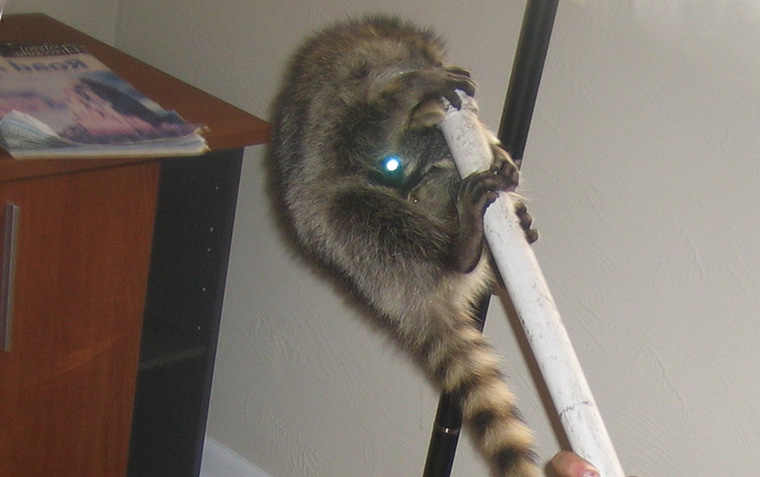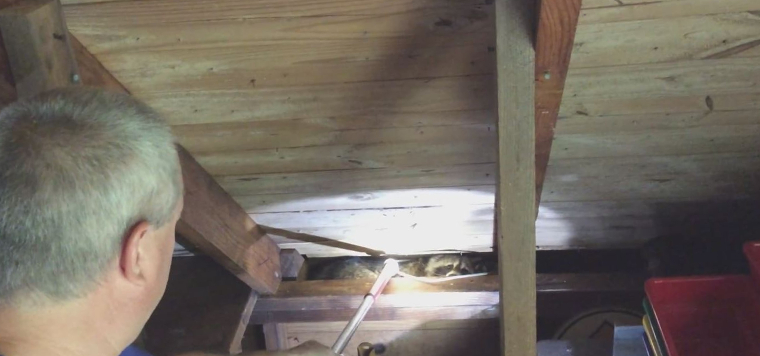-
info@aaanimalcontrol.com
Call us for help in your town
Humane Wildlife Education
Catching wild animals with snare poles
Need wildlife removal in your hometown? We service over 500 USA locations! Click here to hire us in your town and check prices - updated for year 2020.
Snare poles can come in mighty handy when you have a wild critter in a tight spot, or an animal that you don’t want to get too close to. Feral and stray cats and often caught using a snare pole style method, and the same can be said for stray and feral dogs too. You’d be surprised by how many spots a snare pole might come in handy when you have a wild animal infestation in your home, although we do advise that they are used only by the professionals to ensure everyone, and every animal, is kept safe.

What is a snare pole?
Usually made out of a lightweight metal, such as aluminum, the snare pole is a snare on a long pole, just as the name would suggest. The looped ford is meant to capture, but it is not meant to maim or injure the animal, so it is not a trap designed to kill. It is a live trap, not a kill trap.
Wild animals are seriously unpredictable, and when you're dealing with a rogue raccoon running rampant around your home or attic, you'll want to get the problem under wraps as soon as you can. Not only can these animals be dangerous in terms of scratching and biting, and also diseases such as rabies, but many other things become contaminated as a results of the animal coming into contact with it. This includes entire sections of attic insulation, your personal belongings, and even urine and feces.
Snare poles are effective for when you don't want to get too close to these creatures, or the waste matter and contaminated material they leave behind. You must still bear in mind, however, that you will need to clean everything up once the animal has been safely and humanely removed. You can't leave any waste matter behind, because not only will the disease threat still be present, but there will be communication signals, such as pheromones, present in the urine and other biological material. This will signal to other animals, and other animals will soon come. You won't have resolved the problem at all.
How to catch a wild animal, such as a squirrel, with a snare pole
The idea with a snare trap on a pole, is to capture the animal around the neck, but with one leg included, not just around the neck. If you capture the animal just around the neck it could easily become injured.
With the animal safely and comfortably contained within the loop, lift up and out, making sure you have a trap at the other end, and some thick gloves on too.
Snare poles are great for when you have exhausted all other methods in trying to get a squirrel stuck in the chimney. It also comes in handy when you have an animal trapped in the wall cavities, and the only place you can to it is from the attic, looking down.
Snare traps should not be used willy-nilly. They can be dangerous int he wrong hands, and in some cases, certain states dictate that you can’t use them at all. They are not a trap designed to be used with all wild animals, and generally only work in rather specific circumstances. If you don't know how to use a snare pole to capture a wild animal, it’s probably best avoiding trying.
How to Use a Snare Pole to Trap a Raccoon
Need raccoon removal in your hometown? We service over 500 USA locations! Click here to hire us in your town and check prices- updated for year 2020.
A snare pole is a pole (obviously) that is made up of different 'bits'. On one end, there will be a noose-like item, usually made out of covered cable, wire, or fabric. It will be covered to make sure that the material doesn't cut through the animal's flesh and cause pain or discomfort. Cuts easily get infected into the wild, and using a snare pole would suggest that you are trying to find a humane way out of the raccoon shaped problem you've found yourself in. The entire end with the wire material will move around, swivelling, to ensure that it can easily move with the animal. It is predicted that any animal will be stressed enough to lash, panic, flap about, and more as it avoids being captured.

The end of the pole closest to the snare wire will have a protective covering on it as well. This is to protect the pole against the animal, but also to ensure that the pole doesn't inflict injuries on the raccoon (or other animal) as it tries to bite, scratch, or chomp down on it in a bid to break free.
Most snare poles are made out of lightweight but durable materials, such as aluminium, and rubber grips make it easier for the wildlife rehabilitator or handler to keep their grip on the matter. One wrong move and that animal could be off, taking the pole with it. Throughout the entire aluminium tube will be the cable, and on the handler's end of things, a snap-back style release will ensure that the noose end closes as quickly and efficiently as possible.
In theory, you could use a snare pole to grab hold of a raccoon that has gotten itself caught in the chimney or wall cavity, and then lift it to safety. The pole is lowered (or raised higher if necessary) to reach the animal, the noose carefully slipped over the raccoon's head, and then the catch is triggered to pull things tight, but not uncomfortably tight. You will need to move quickly but carefully to ensure that injury doesn't occur, to either you or the raccoon/animal.
There are tutorials showing you how to make a DIY raccoon snare pole but we cannot advise you use this homemade approach. Commercially or specially-made snare poles are designed to do the job whilst keeping the animal safe, whereas homemade ones do not usually afford for such luxuries. We have seen cases of homeowners killing animals with DIY snare poles, usually by decapitation or asphyxiation, neither of which we're sure you want to experience for yourselves.
For more information, you may want to click on one of these guides that I wrote:
How To Guide: Who should I hire? - What questions to ask, to look for, who NOT to hire.
How To Guide: do it yourself! - Advice on saving money by doing wildlife removal yourself.
Guide: How much does wildlife removal cost? - Analysis of wildlife control prices.
animals in the attic
noises in the attic


















